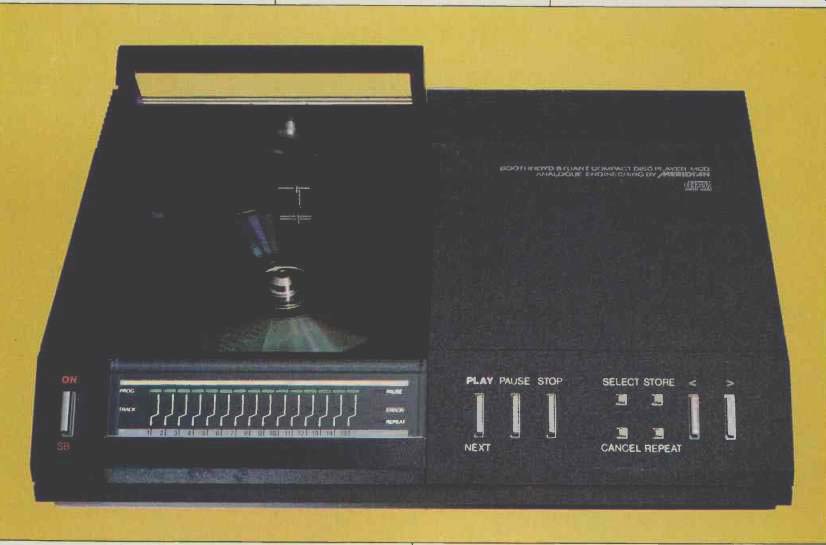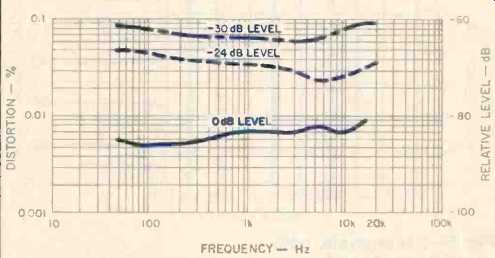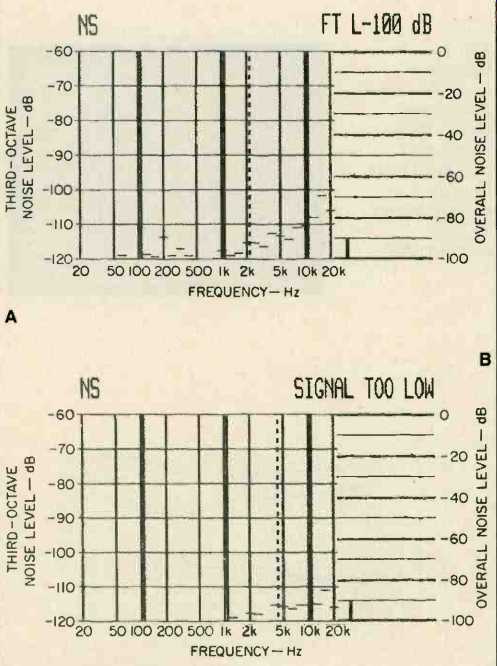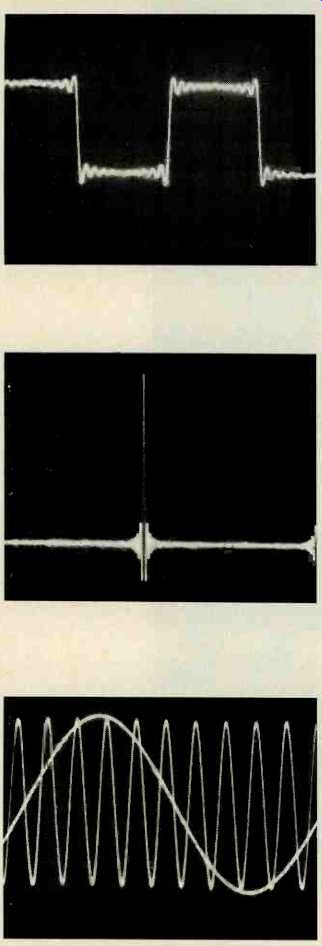
Manufacturer's Specifications
Frequency Response: 20 Hz to 20 kHz, ±0.3 dB.
S/N Ratio: Greater than 90 dB (20 Hz to 20 kHz).
Dynamic Range: Greater than 90 dB.
Channel Separation: Greater than 86 dB (20 Hz to 20 kHz).
THD: Less than 0.005%, including noise, at 0-dB recording level.
Output Level: 2.0 V.
Power Consumption: 35 watts.
Dimensions: 12 1/2 in. W x 3 in. H x 10 1/2 in. D (31.8 cm x 7.6 cm x 26.7 cm); with cover open, 7 in. H (17.8 cm).
Weight: 11 lbs. (5 kg).
Price: $689.
Company Address: c/o Madrigal Ltd., 2081 South Main St., P.O. Box 781, Middletown, Conn. 06457.
First, let me clear up the questions which have probably already been raised by the photo of the Meridian MCD (which looks remarkably like one of Magnavox's early CD players) and the Madrigal company address. To begin with, Madrigal is the U.S. company that is now distributing products made by those innovators from Great Britain, Messrs. Boothroyd and Stuart, whose Meridian-brand electronics and transducer products have won worldwide acclaim. As for the similarity in appearance between the MCD player and the Magnavox FD1010 (actually, the lowest cost CD player made by Philips in The Netherlands), Madrigal and Meridian make no secret of the fact that they have taken the Philips player and modified it with improved analog electronics and other refinements. In fact, the owner's manual that accompanied my sample is the Magnavox pamphlet normally supplied with their FD1010; only a single, addition al sheet of paper, inserted in the printed manual, tells us about the modifications installed by Boothroyd-Stuart to create the MCD. I hope all of this inter-corporate complexity is now clear, so that we can get on with an examination of what Magnavox, Philips, Meridian, Boothroyd-Stuart, and Madrigal have wrought!
Control Layout
The MCD player is one of the few currently available units that do not employ a slide-out drawer for inserting CDs. Instead, CDs are placed onto a top-loading turntable which is normally covered by a hinged, transparent-plastic door.
Boothroyd-Stuart suggest that, while microphonics are not as big a problem in CD players as they are in conventional analog turntables, the added stability of such a turntable mount is one of the reasons why they chose to modify this particular player. I can't easily verify whether this enhances performance, but certainly the fixed turntable (as opposed to one on a slide-out drawer) can't be doing any harm to the quality of reproduction.
Controls and indicators are all located on a forward-sloping panel, angled for easy viewing and handling. A power on/off button is at the extreme left; to its right are a bank of 15 LEDs which indicate both the number of tracks on a disc and the track that is currently being played or selected. "Pause," "Error," and "Repeat" indicator lights are positioned just to the right of the track LEDs.
To the right of center-panel are three buttons, labeled "Play/Next," "Pause," and "Stop." The "Play/Next" button is used both for initiating disc play and for advancing the laser pickup to the next track during play. Further to the right are a "Repeat" button (for replaying either the entire disc or the programmed track selections) and the "Select," "Cancel," and "Store" buttons used for programming. Each press of "Select" or "Cancel" advances the track indicator to its next LED. To program selections sequentially, advance to each desired track with the "Select" button, then press "Store." To program out unwanted tracks, follow the same procedure, but use "Cancel" instead of "Select." Non-sequential programming is harder: To go back to prior tracks, you must press (or hold down) the "Select" button until the track indicator passes the 15th LED and cycles back from the beginning to your next desired track.
Since there are only 15 LEDs in the display, you cannot program track numbers beyond 15, though the "Play/Next" button will allow you to skip ahead to higher numbered tracks providing you keep a mental note of where you are.
Two pushbuttons with directional arrows, at the extreme right of the control panel, are used to search silently forward or backward to a particular musical passage. Connection from the MCD to your amplifier is made by means of the usual left and right output jacks that are found on the player's rear panel.
Measurements
Figure 1 shows the frequency response for both channels of the Meridian MCD. Once again, I have expanded the vertical scale to 2 dB per vertical division in order to accentuate any slight deviations from perfectly flat response. The maximum deviation was only-0.2 dB at 20 kHz for the left channel and-0.4 dB for the right.

Fig. 1--Frequency response, left (top) and right channels.

Fig. 2--Spectrum analysis shows 20-kHz test signal (large spike) and inaudible
beat tone at approximately 24 kHz (small spike).

Fig. 3--THD vs. frequency at three output levels.
Harmonic distortion at mid-frequencies was 0.007% for a test signal at maximum recorded level, and it remained practically constant over the measured frequency range, never rising above 0.008%. In this, the MCD is unlike most other CD players, which usually exhibit rising distortion characteristics at higher frequencies. It may well be that Meridian's improved analog-output amplifier circuitry is in part responsible for this uniformly low distortion level.
Figure 2 shows the usual "beat" frequency component which occurs above 20 kHz when I try to measure THD for high frequencies (in this case, 20 kHz). The extra "blip," seen to the right of the desired 20-kHz signal, is at approximately 24 kHz (the sweep is linear from 0 Hz to 50 kHz in 5-kHz steps), and results from the interaction of the 20-kHz signal with the 44.1-kHz sampling rate of the CD format. The spurious component is, of course, not audible, nor should it be characterized as harmonic distortion.
Figure 3 plots harmonic distortion versus frequency for maximum recorded level as well as for-24 and-30 dB levels. As usual, THD increased at lower recorded levels, but remained an insignificantly low 0.06% even at -30 dB.
Output linearity was extremely accurate--to within 0.1 dB from 0-dB recorded level down to -60 dB. At -80 dB, linearity was off by only 0.3 dB.
Figure 4 shows stereo separation or crosstalk for each channel over the range of frequencies tested. Separation ranged from 79 to 89 dB for the left-to-right channel measurements and from 88 to 92 dB for the right-to-left channel measurements. Obviously, Boothroyd-Stuart's analog out put stages were designed to provide good isolation be tween channels and to achieve the lowest possible distortion and good signal-to-noise ratios.
As for signal-to-noise ratios, they were superb. I measured 100 dB, unweighted, in the absence of a signal, referenced to maximum recorded level. This result, together with a third-octave plot of noise distribution, is shown in Fig. 5A. When I tried to measure the noise level through an A-weighting network, my Sound Technology test instrument objected by displaying the message "SIGNAL TOO LOW" (see Fig. 5B).

Fig. 4--Separation vs. frequency.

Fig. 5--S/N analysis, both unweighted (A) and A-weighted (B).

Fig. 6--Square-wave reproduction, 1 kHz.
Fig. 7--Single-pulse test.
Fig. 8--Phase-error check using 200-Hz and 2-kHz tones.
SMPTE-IM distortion measured 0.005% at maximum re corded level and increased to a still insignificant 0.03% at -20 dB. Using twin-tone test signals of 19 and 20 kHz, whose sum was equivalent to 0-dB (maximum) recorded level, I measured a CCIF distortion of only 0.0035%. This twin-tone IM distortion increased only slightly, to 0.0063%, at-10 dB recorded level.
Figure 6 shows how a 1-kHz, digitally generated square wave on my test disc was reproduced by the MCD. If you have read my previous CD reports, you will recognize immediately that this player uses digital filtering combined with an oversampling technique. But look more closely at the photo, and see if you don't agree that the reproduced square wave seems to have less "ripple" in it than those produced by other players using the same kind of filtering and D/A conversion. Could it be that some of the imperfections in a reproduced square wave come from the less-than-perfect analog output stages of some CD players-those output stages that have been reconfigured by Boothroyd-Stuart in this MCD? As for the reproduced unit-impulse signal (Fig. 7), here I didn't see any difference between it and the usual 'scope display I get when testing other players that employ this basic type of circuitry. As you might expect, too, there was no evidence of phase error when comparing the 200-Hz output of one channel with the simultaneous, 2-kHz output of the other channel, as seen in Fig. 8. Both sine waves are supposed to cross the zero axis at the same time and in the same direction, and so they do.
It came as no surprise to me that the MCD player was able to play through all the defects in my special error-correction test disc. After all, the original Magnavox FD1000, whose successor was modified to create the MCD version, was also able to play through 900 microns of opaque wedge, simulated dust spots 800 microns in diameter, and a simulated fingerprint smudge. Nor was I surprised to find that the player exhibited excellent resistance to mistracking when it was tapped lightly on its top surface and side panels. I can't necessarily attribute this excellent resistance to outside vibration and shock to the disc-loading method, since I have tested drawer- mount CD players which did as well. I can say that the MCD player did as well as the very best units that I have tested in this respect.
Use and Listening Tests
I wish I still had the early Magnavox CD player I tested more than two years ago. I would have loved to be able to conduct a blind or even a double-blind A/B test of the MCD player against that Philips-built unit. (Editor's Note: Audio reviewer Laurence L. Greenhill did conduct a similar test, comparing the MCD to a Philips CD101 player; his evaluation appears below.) As I recall, the early Magnavox players earned rave reviews from me and from others as far as their sound quality was concerned. But you must remember that two years ago my collection of CDs used in listening tests was much smaller--and there were fewer discs that I could truly call well-recorded, in terms of CD technology and recording technique. Furthermore, hearing memory is, as we all know, extremely short. For all that, it still seems to me that while the MCD player does produce superb sound from every standpoint, I just can't say with complete confidence whether its sound quality really exceeds that of the earlier Magnavox model.
I do have one criticism of the MCD player--or, more precisely, of Boothroyd-Stuart's selection of this particular model as the one to modify. Why did they have to choose the least easily programmable of Magnavox's line of CD players--and the one which accesses desired tracks so slowly? ( Meridian does say, though, that later units will have a new control chip for faster access; my sample came from the first production run.) I know that, to many people, this won't seem a problem, especially if they listen to discs straight through. But to listeners who favor popular music, and who play discs that may well contain more than 15 selections, the rather primitive search and programming capabilities of the MCD may well prove to be an irritant.
My best suggestion for anyone considering the purchase of this player would most definitely be to do some serious listening to it-and to competing models. If your ears are keen enough to convince you that the sounds you hear from the MCD are audibly better than those you hear from other CD players, then you must make a couple of other decisions. Are you willing to forgo the fancy programming and random-access frills in return for that better sound quality? If so, are you willing to spend a couple of hundred extra dollars for the sound improvement you hear?
-Leonard Feldman
Controlled Listening Test
Do Meridian's modifications produce a different-sounding CD player than the original Philips unit? To answer this question, I invited an audiophile friend, Arnis Balgalvis, to join me for an unbiased comparison of the Meridian MCD unit with a stock Philips CD101. Both machines were auditioned for 20-minute periods to identify their sonic characteristics. Then they were plugged into the ABX Co.'s CS-5 comparator system with RM-2 relay module, a device which allows rapid changeover between components with as much time between changeovers as the listener requires.
This instrument randomly selects either CD player for a blind test when the listener pushes a randomizing button; the identity of each test trial selection is stored in the comparator's memory for later retrieval. The listener's task is to correctly identify the player chosen by the relay module.
Tests were run using a Levinson ML-7 preamp and ML-9 amplifier connected to Snell Type A/III loudspeakers by Hitachi oxygen-free copper, single-crystal speaker wire.
Two identical samples of each Compact Disc, one for each player, were used for evaluation, with the two machines synchronized to the same musical note on the paired discs.
Output levels of the two machines were quite close, matching to within 0.05 V (approximately ±0.5 dB), as shown by VTVM measurements at the amplifier outputs using the Philips Audio Frequency Test Sample NR.3 (CD 410-055-2).
The two players had distinct sonic personalities when connected directly to the Levinson preamp's high-level in puts. The early Philips player had substantially more bass, but sounded zippier, with more etched highs and an overall sonic hardness when compared to the Meridian. The latter seemed subdued and muted by comparison, with softer transients and less midrange harshness; it had better depth of imaging but an airier, less solid bass.
These subjective impressions could not be confirmed by the five controlled listening tests which followed. Each test consisted of 16 trials; 12 correct answers were required for the listener to be considered statistically accurate in identifying a player. One of the listeners scored 10 and 11 correct on two separate trials, doing little better than if he had been guessing. The other listener, who claimed he was listening for the Philips player's bass emphasis, scored in the significant range, getting 14 and 15 correct out of 16 attempts.
But his score on a third test fell to 10 out of 16 correct after he synchronized the two players' musical outputs more exactly. The signals from the two players were temporarily mixed with a Y-connector while making cueing adjustments.
This suggests he may have been detecting synchronization errors to identify the Compact Disc players, not their sonic attributes.
The sonic differences evident on direct, open listening were not statistically confirmed during the double-blind, controlled tests using the equipment listed above. This suggests that the Meridian player's electronic improvements yield only a subtle sonic upgrade.
-Laurence L. Greenhill
(Source: Audio magazine, Jun. 1985)
Also see:
Meridian 208 CD player/Preamp (Equip. Profile, Apr. 1991)
Meridian D600B Speaker (Mar. 1991)
Meitner PA-6i Preamplifier (Nov. 1988)
= = = =